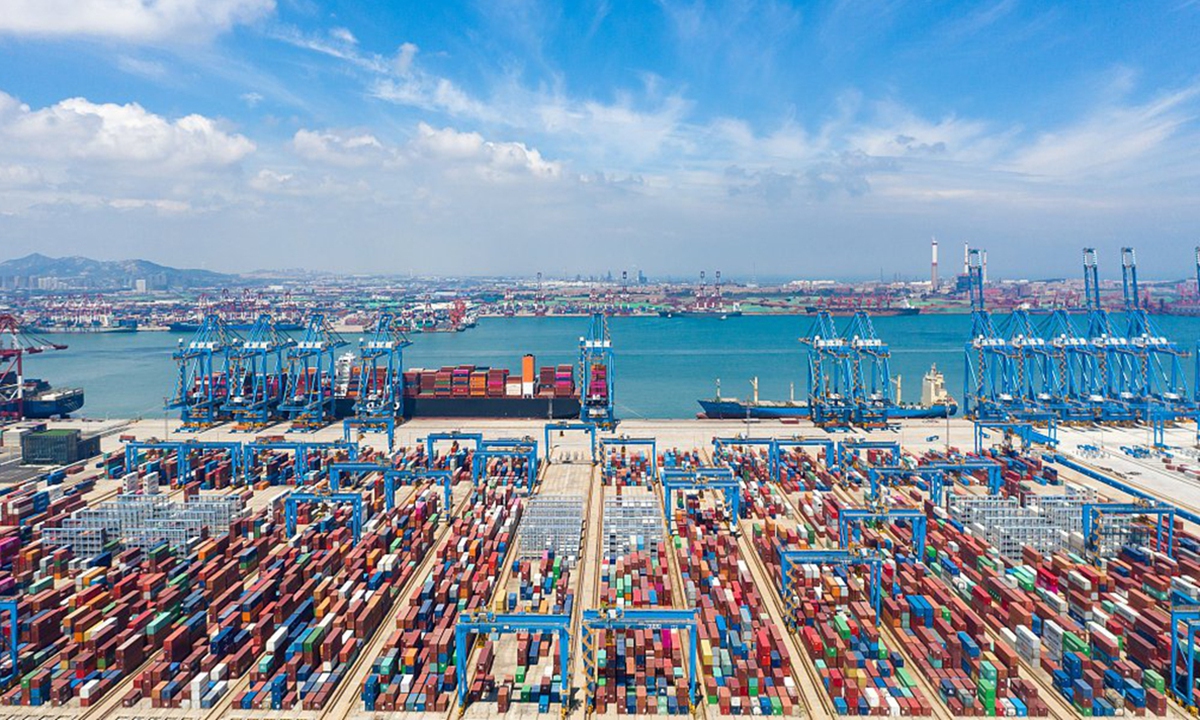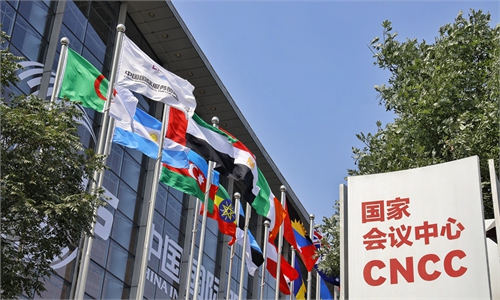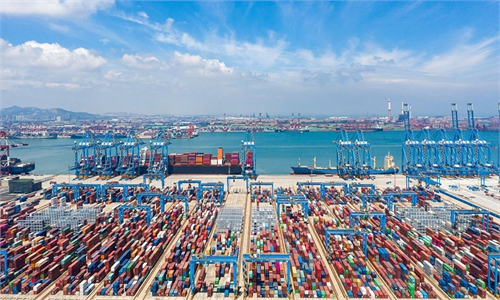Effective investment, major growth driver, underpins China’s economic recovery
Spending in key, innovative sectors surge, defying foreign media smears

China trade economy File photo: VCG
As Western officials and media outlets mounted what appears to be a concerted campaign to paint a picture of the Chinese economy as being at the cusp of collapse, claims of slowing investment, one of the three drivers of China's economic growth, have also become ubiquitous in media reports. However, such claims only focus on certain indicators and ignore the overall picture of China's focus on effective investment in new emerging sectors to ensure long-term sustainable growth.While weakened expectations among investors are resulting in some challenges, China has also taken a slew of measures to tackle them and stabilize foreign investment and private sector investment. In the latest move set to lift investors' confidence, the People's Bank of China, the central bank, on Thursday announced that it would cut the reserve requirement ratio by 25 basis points starting on Friday to maintain ample liquidity and help consolidate economic recovery.
Bustling activity
While China's fixed-asset investment has seen slower growth and private sector investment saw a decline - two of the factors most widely cited by foreign media to smear the Chinese economy - investment activities remain robust in key areas across the country.
At the recently-concluded China International Fair for Investment and Trade (CIFIT) in Xiamen, East China's Fujian Province, businesses from around the world, including the US, the UK and Thailand, passionately showcased their products and services, drawing palpable enthusiasm from spectators who packed the exhibition halls. All told, over 1,000 business groups and nearly 80,000 exhibitors from 106 countries and regions attended China's major investment fair. Deals were reached for 638 projects with a planned investment of 484.57 billion yuan ($66.58 billion), data showed on Thursday.
Two days before the opening of CIFIT, Xiamen held a ceremony for the groundbreaking or completion of 40 major projects with a combined investment of 71.4 billion yuan covering key areas such as new energy and information technology.
Such bustling scenes are ubiquitous in many cities across China. Earlier this month, at an investment promotion event for Beijing on the sidelines of the China International Fair for Trade in Services, investment deals worth about 104.55 billion yuan covering such areas as modern services were inked on a single day. This week, at a ceremony at the high-tech development park in Xi'an, Northwest China's Shaanxi Province, 31 projects in areas such as technological innovation and new consumption with a total investment of 38.2 billion yuan were signed.
These are just snapshots of the investment activities across China in recent months as the country emerges from the three-year pandemic. Investment is often described as one of China's three economic growth drivers - the other two being consumption and exports. Chinese officials and analysts strongly refuted such "inaccurate" narratives and maintained that investment in China remains solid, and the focus on effective spending in key emerging sectors such as technological innovation, green development and new infrastructure will underpin sustainable growth.
Citing a report from Rhodium Group, a US market research firm, Reuters reported on Wednesday that "Western firms shift investment from China to India as worries mount." Commenting on the report, He Yadong, a spokesperson for the Chinese Ministry of Commerce (MOFCOM), said Thursday that such claims are "inaccurate," noting that actual investment from countries such as the US, Germany, France, the UK and Sweden maintained growth in the first seven months of 2023. "Overall, the Chinese market remains highly attractive to foreign investment," He told a press briefing.
Claims of declining Western investment in China also run counter to what Western businesses are actually saying about and doing in the Chinese market. German specialty chemical maker Evonik said on Tuesday that it has completed the relocation and expansion of its precious metal powder catalyst plant in Shanghai, with doubled production capacity. "China is one of the most important precious metal powder catalyst markets in the world," said Lorenza Sartorelli of Evonik. UK-headquartered IHG Group told the Global Times that it has already opened 658 hotels under 12 brands in China, and nearly 500 more are in the pipeline.
According to MOFCOM data, in the first half of 2023, while China's utilization of foreign capital dropped 2.7 percent year-on-year, Western investment in China saw rapid growth led by a 173.3-percent growth in investment from France. Also, foreign investment in China's high-tech sector saw a 7.9-percent growth, and that in high-tech manufacturing saw a 28.8-percent growth.
New growth point
The concentration of foreign investment in high-tech areas is also in line with China's focus on boosting key emerging sectors to ensure long-term sustainable economic growth, analysts said. They noted that China has been focusing on effective investment in new growth drivers in recent years, instead of the massive infrastructure spending seen after the global financial crisis in 2008, which helped stabilize the economy, but led to issues such as overcapacity.
"We do not build a large amount of infrastructure, but make targeted investments to meet the actual needs of the market, such as smart manufacturing and digital transformation. In this way, we can drive the transformation and upgrading of the entire economy and society, increase our strength, and build a modern industrial system," Wang Peng, an associate research fellow at the Beijing Academy of Social Sciences, told the Global Times on Thursday.
Chinese officials and official documents also repeatedly highlight effective investment in areas such as new emerging sectors and "new infrastructures" such as 5G base stations and new-energy vehicle charging stations.
This focus has also been reflected in the actual investment activities on the ground. In the first half of 2023, investment in new infrastructure surged by 16.2 percent and investment in major energy projects increased by 23.9 percent, according to data. Moreover, from January to July, investment in e-commerce and services expanded by 14.2 percent and 22.2 percent respectively. These indicators outperformed fixed-asset investment, which grew by 3.4 percent in the first seven months, and private sector investment, which dropped by 0.5 percent.
Although growth in fixed-asset investment is relatively slow, the overall structure of China's investment has been optimized, said Hu Qimu, deputy secretary general of the digital real economies integration Forum 50, pointing to high growth in investment in strategic emerging sectors and advanced manufacturing. "These trends in fact reflected our guiding principle: achieving effective improvement in quality and reasonable growth in quantity," Hu told the Global Times on Thursday. "It's not purely about pursuing the growth of the size of the GDP."
Meanwhile, Chinese officials have moved swiftly to stabilize foreign investment and private sector investment, as part of a broader effort to stabilize overall economic growth amid a global downturn. In August, China released 24 measures to boost foreign investment. In July, it issued a guideline including 31 measures to boost the growth of the private economy.
"Private investment and foreign investment is seeing a stable growth trend thanks to greater attention paid to China's market potential and confidence in Chinese government policies," Li Yong, a senior research fellow at the China Association of International Trade, told the Global Times on Thursday.



